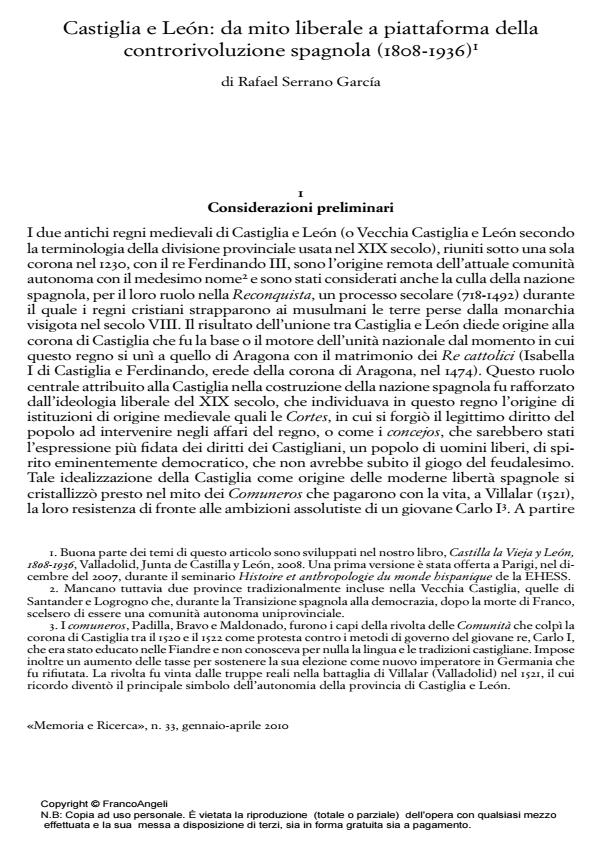Castile and León, from liberal myth to scene of the Spanish counter revolution, 1808-1936
Journal title MEMORIA E RICERCA
Author/s Rafael Serrano Garcìa
Publishing Year 2010 Issue 2010/33
Language Italian Pages 17 P. 135-151 File size 321 KB
DOI 10.3280/MER2010-033009
DOI is like a bar code for intellectual property: to have more infomation
click here
Below, you can see the article first page
If you want to buy this article in PDF format, you can do it, following the instructions to buy download credits

FrancoAngeli is member of Publishers International Linking Association, Inc (PILA), a not-for-profit association which run the CrossRef service enabling links to and from online scholarly content.
This article examines the evolution of a Spanish region, Castilla y León, from 1808 to 1936, and tries to throw light on an apparent contradiction. That is, while Castilla was considered the birthplace of the modern civil liberties from the Liberal perspective, a majority of its inhabitants offered a crucial support to the rebellion against the Second Republic in July 1936. The article focuses on several issues. The fi rst being the scarce vitality of the region, both human and economic, its weak urban scene, the slight penetration of Liberalism in its society -mainly amongst its peasantry, and how, on the other hand, there was a strong development of peasant unions, which had fl ourished during the fi rst third of the 20th century, and that favoured the incorporation of those peasants into the public sphere. These unions, strongly infl uenced by the Church and the Catholic upper classes, would prepare the grounds for the electorate to become right-winged in the 1930s and justify in advance the military coup.
Keywords: Liberalism, Comuneros, Wheat Economy, Catholic Syndicates, Spain’s Second Republic, Political Violence
Rafael Serrano Garcìa, Castiglia e León: da mito liberale a piattaforma della controrivoluzione spagnola (1808-1936) in "MEMORIA E RICERCA " 33/2010, pp 135-151, DOI: 10.3280/MER2010-033009